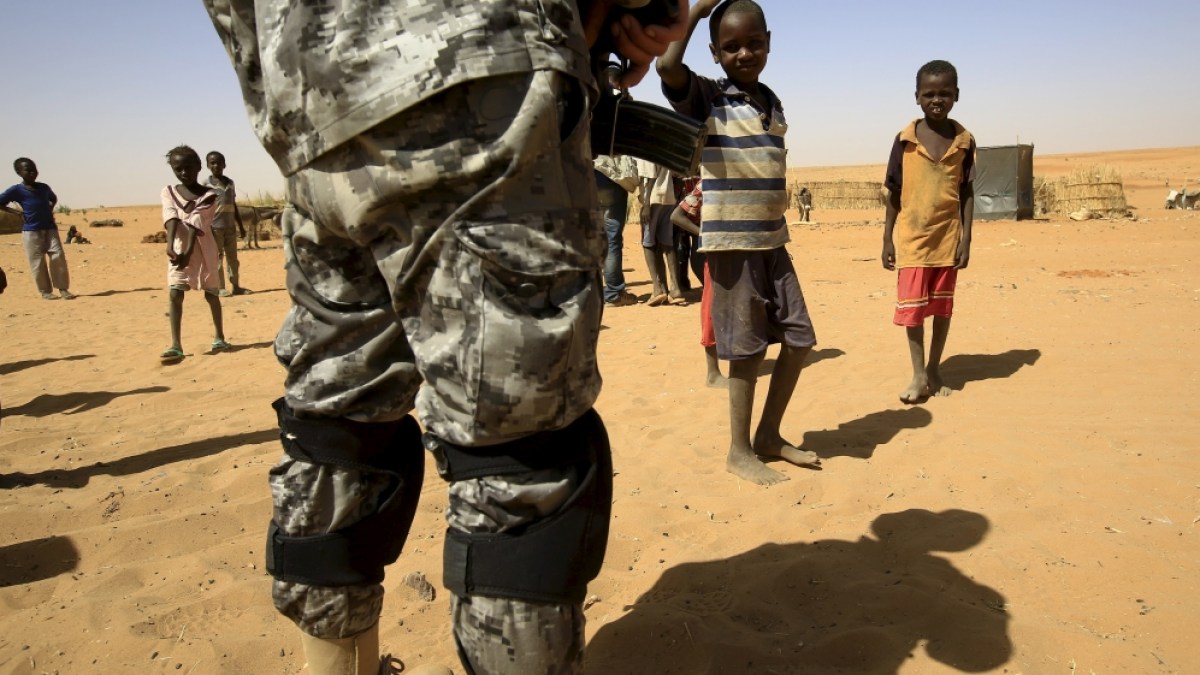Climate crisis stings Nepal’s honey gatherers, threatens tradition | Climate Crisis
Aita Prasad Gurung dangles off a cliff in Nepal, carefully manipulating a long pole with a blade at its end to cut away chunks of honeycomb after Himalayan bees fled fumes from a fire set to drive them from their homes.
The 40-year-old wear a white hat with a net covering his face to protect against stings as he hangs 50 metres (160ft) off the precipice on a handmade ladder braided from bamboo strands to reach the bee colonies.
“It is fraught with the danger of falling,” says Aita, whose community has traditionally harvested honey from hives perched dozens of metres off the ground. “One must extract honey and stay safe at the same time.”
Now the generations-old craft is increasingly under threat as some experts say rising temperatures brought by climate change disrupt the growth of bees, the availability of their food and even the pollination of plants.
“There were about 35 hives last year,” says another member of the community, Chitra Bahadur Gurung, 49, adding, “We barely have 15 now.”
For generations, the Gurung community in Taap, about 175km (110 miles) west of the capital, Kathmandu, and other villages in the nearby districts of Lamjung and Kaski has scoured the Himalayan cliffs for honey.
Earlier, the villagers joined in the ritual slaughter of a red rooster, separating its feet and feathers as an offering to the cliff god to seek forgiveness for taking the honey from the giant bees, known to scientists as Apis laboriosa.
The honeycomb extract, also known as “mad honey” for some intoxicating qualities that can cause hallucinations, sells for 2,000 Nepali rupees ($1.50) a litre (about a quarter of a gallon).
The proceeds, split among the group, are drying up as the number of hives declines, the villagers say, although some earn a living from growing rice, corn, millet and wheat.
With less honey available to collect every year, income from the pursuit has declined over the past decade, 41-year-old Hem Raj Gurung says.
“We harvested about 600kg [1,300lb] of honey 10 years back, which fell to about 180kg [400lb] last year and is just about 100kg [220lb] this year,” he says.
Some experts blame climate change as a major factor for the decline, but other contributors are deforestation, diversion of water from streams and rivers for hydroelectric dams and the use of pesticides.
Temperatures increases in the Himalayas, home to the planet’s tallest mountains, range higher than the average global rise of 1.2 degrees Celsius above pre-industrial levels, United Nations data and independent research show.
Global studies have found that a temperature rise of even 1 degree affects the growth of bees, the availability of their food and cross-pollination of plants, says Suruchi Bhadwal of India’s Energy and Resources Institute.
Research shows climate change is disrupting the food chains for bees and the flowering of plants, affecting populations of both across the world, adds Bhadwal, the head of earth science and climate change at the institute.
“In terms of the patterns and what we’re talking about, I think the patterns are the same in Nepal,” she says.
Climate change is affecting the Himalayan cliff bees in different ways, says Surendra Raj Joshi, a specialist in resilient livelihood at the International Centre for Integrated Mountain Development in Kathmandu.
“Too much or too little rain, intense or erratic rain, and long dry spells or high fluctuations in temperature put stress on honeybees to maintain colony strength and honey stocks,” he says.
Life cycle changes in plants also cause early or late flowering and fluctuations in secretion of nectar and honeydew, he says, adding, “The most visible indicator of the climate change is the erratic weather.”
Some experts say floods and landslides can cause habitat loss and shrink the areas where bees can forage for food.
The decline in bee populations means insufficient pollination of high mountain crops and wild flora, says Joshi, who is also an expert on bees.
“It will also have implications on the rural economy as honey hunting is a tradition emerging as an important ecotourism activity,” Joshi adds. “Besides honey and beeswax, communities will lose income from tourism.”
Check out our Latest News and Follow us at Facebook
Original Source







